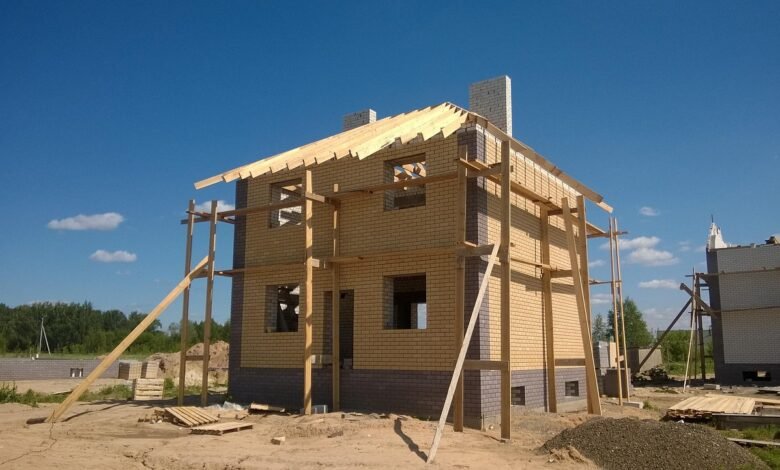How to Save Money on Building Without Cutting Corners

Building a home or undertaking any construction project is a significant financial investment. While the temptation to minimize expenses can be strong, especially during periods of economic uncertainty, compromising on quality often leads to higher costs in the long run. The key lies in smart planning, careful decision-making, and leveraging expert resources. It is possible to keep construction costs in check without sacrificing the durability, efficiency, or aesthetic appeal of the final outcome. This article explores practical strategies designed to help you save money on building while maintaining high standards throughout the process.
1. Plan Your Project Thoroughly Before Construction
One of the most effective ways to control costs is to begin with a detailed and well-researched plan. Investing time in the design and budgeting phases can prevent expensive modifications later. Engage with architects and designers early to finalize the structure, materials, interior functionalities, and style to ensure that everything aligns with your financial expectations.
Additionally, create a comprehensive construction timeline, allocating sufficient buffer for unforeseen delays or issues. A well-structured schedule lowers the risks of cost overruns related to labor extensions or expedited services. Proper planning also enables better resource management and reduces wastage, which ultimately reflects in overall savings.
2. Choose Quality Materials at the Right Price
Choosing low-cost materials might appear to balance the budget in the short term, but it often results in higher maintenance and replacement expenses. Instead, focus on sourcing high-quality building materials that offer a balance of durability, performance, and cost-efficiency. For instance, opting for fiber cement siding instead of wood can reduce upkeep costs significantly without compromising on aesthetics.
To source the best materials at competitive prices, consider working with professional estimation services such as estimedes.co.uk/en. Their expertise helps identify cost-saving opportunities without reducing the material grade. Estimedes offers professional estimating services for construction projects, enabling builders and developers to make informed purchasing decisions based on accurate cost predictions and supplier recommendations.
When comparing material options, pay attention to the following factors:
Material longevity and warranty periods Maintenance needs over time Energy efficiency and insulation properties Environmental impact and certifications
Choosing products based on these criteria not only saves money over time but enhances a structure’s value and resilience.
See Also: Luxury Mattress Features That Will Transform Your Sleep Experience
3. Hire Skilled Professionals Wisely
While it may seem tempting to hire inexpensive or less experienced contractors, this decision often leads to costly errors, delays, or even rework. An essential part of smart budgeting is partnering with professionals who have a proven track record in delivering quality craftsmanship. Efficient professionals will minimize waste, avoid project missteps, and ensure that construction adheres both to regulations and your vision.
Request references, review portfolios, and verify licenses before signing any contracts. Additionally, consider contractors who offer fixed-price agreements or who are open to discussing optimum resource usage. It’s also beneficial to work with firms that incorporate field-level technology for real-time updates and cost tracking.
See Also: Building customer confidence through SOC 2 trust criteria compliance
4. Implement Energy-Efficient Solutions
Integrating energy-saving structures and systems during construction can result in significant financial benefits in the long term. Though the initial investment may be moderately higher, features such as insulated windows, LED lighting systems, solar panels, and smart thermostats reduce monthly utility costs and boost the overall property value.
Furthermore, opting for insulated materials and proper HVAC design decreases a building’s environmental impact and enhances occupant comfort. Leveraging local energy rebate programs and tax credits also helps offset installation costs, making energy upgrades even more economically viable.
See Also: Ancoats Chiropractic Clinic: Trusted Care at Ancoats Chiropractic Experts
5. Avoid Costly Changes During the Build
Alterations made after the construction process has started often disrupt the workflow and increase both material and labor costs. Whether it’s a last-minute design change or a shift in material preference, these adjustments tend to ripple through the project timeline and budget extensively.
To avoid unexpected expenses, finalize all decisions during the planning phase and resist making changes unless absolutely necessary. Maintain open communication with your project manager and confirm that every stakeholder is working from the same specifications. Detailed construction drawings, budget outlines, and milestone reviews can help keep the initial vision intact and the costs predictable.
Conclusion
In conclusion, building on a budget without cutting corners is a realistic goal when executed with thoughtful planning, informed selections, and experienced support. Leveraging expert estimating services like estimedes.co.uk/en helps identify hidden savings and ensures that investments are made where they will generate the highest value. Careful strategies such as evaluating material life cycles, choosing qualified labor, and avoiding reactive changes during the build contribute significantly to staying within budget while constructing a quality structure.

